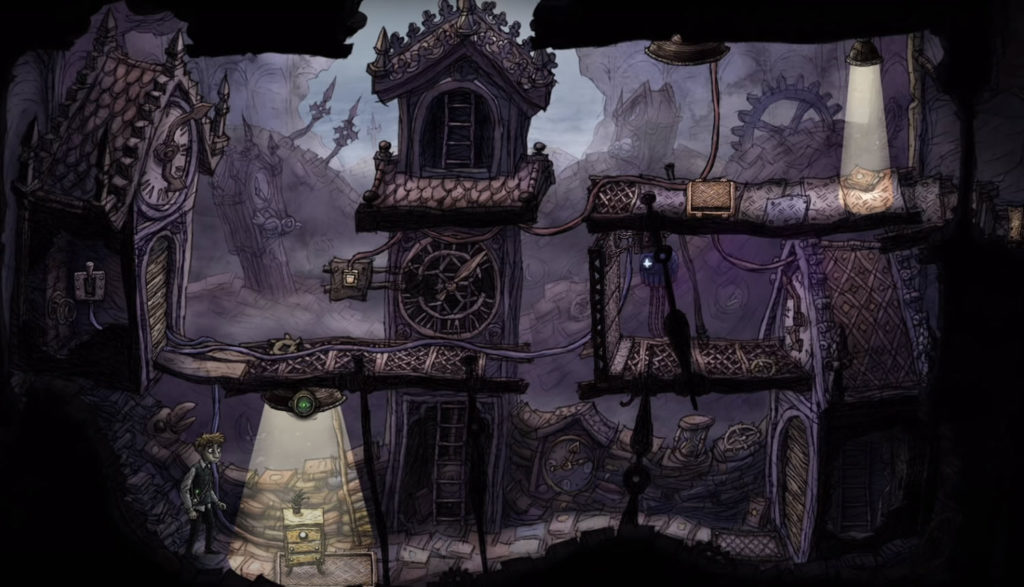
Ever heard the word pareidolia? It’s essentially the human tendency to see things that really aren’t there. You might see a monster at night when it’s really just a tree outside your window or a stand-up lamp cloaked in darkness. It’s only when that scary object is hit by a beam of light or the glow from a cell phone that we suddenly see how we’ve let our imaginations run away with us.
Pareidolia is the driving force behind a new puzzle/platform game called Creaks. It transforms a series of environmental puzzle challenges into something of a beautiful, if slightly creepy, mystery.
The game begins when a skinny little guy with a mop full of tousled hair finds a ventilation shaft behind a peeling section of wallpaper in his room. So what’s a guy to do? Crawl in, of course. And when he does, he discovers that there’s an amazing and vast cave filled with massive stalactites and stalagmites situated just below his residence. Oh, and there’s a rickety ladder leading down.
That ladder deposits the hero (and you) into a crumbling mansion that appears to be hewn right out of a gigantic stalagmite itself and spreads on and on. This incredibly detailed, hand-drawn, steampunk-ian place is filled with discarded clothing, appliances, interactive wind-up artwork, switches, levers, broken sheetrock and … monsters.
At least the creatures you face look like monsters until you can figure out how to turn on a light and reveal that the growling robotic dog about to attack is really a small night stand, and that humanoid-like spiky-haired creature glaring at you is really a hat rack. In the dark, threats abound, but in light they become everyday objects that you can move and climb on.
But here’s the catch: If you don’t light up the room, those imagined creatures become real enough to be a real threat.
What is this place? Who built it? What’s causing those earthquake-like rumblings outside the creaking manor? And how do you even get out of this Tim Burtonesque scare-house? You have to find answers to all those questions as you make your way past the puzzles of this decaying and disintegrating building.
You do so by using your logic and experimenting with various pressure plates, cranks and switches. Sometimes the solution is as simple as luring a shadow creature into a given area so that you can climb past to the door or ladder it was guarding. Sometimes it means figuring out how to redirect the movements of a floating metallic thingy or finding the right pathway to a hidden switch you didn’t first see.
As is characteristic of any solid puzzle game, the solutions often teach new twists on the rules and open up new possibilities. The creative musical underscore helps, too, delivering special flourishes when you’ve hit upon a key element to any given puzzle. And, of course, the puzzles themselves become more and more difficult—sometimes involving three or more levels of the house and a number of switches, ladders and drawbridge levers.
If you’re caught by one of the shadow creatures, a silhouette cutscene shows the beasty pouncing on our hero. But then you and he regroup at a previous save point and give the failed section another try.
And from a content perspective that’s pretty much all there is: It’s a little creepy, and those stylistically cute monsters really are monsters that want to grab you while you’re in the dark. But frankly, it’s the game’s creative beauty, internal logic, and the Victorian ramshackle building—all wrapped in an enormous imaginative scope—that will really grab you. Hey, it may even help you worry a little less about that chair crouching in your bedroom’s shadows.

After spending more than two decades touring, directing, writing and producing for Christian theater and radio (most recently for Adventures in Odyssey, which he still contributes to), Bob joined the Plugged In staff to help us focus more heavily on video games. He is also one of our primary movie reviewers.